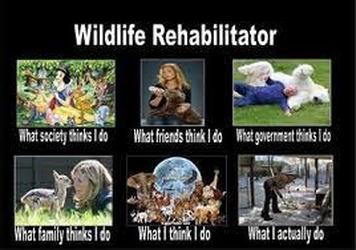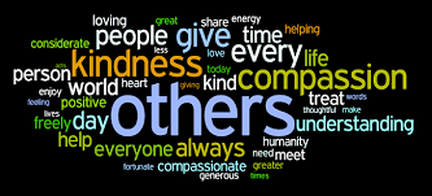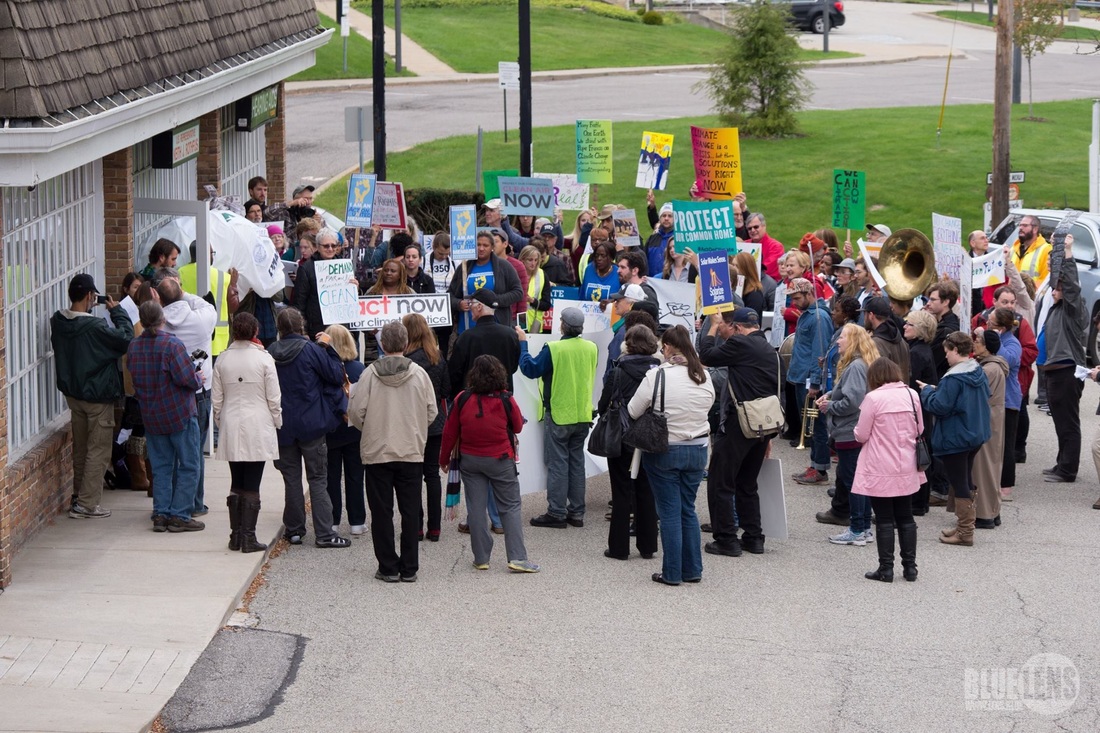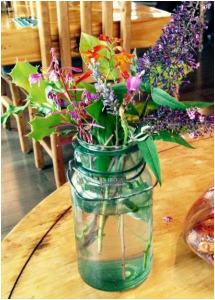The wildlife rehabilitators may work with one type of animal, like songbirds, or several types within a class, like all small mammals except those prone to carrying rabies, or with many different species, like songbirds, raptors, rabies-prone animals, and mammals of many kinds (I am sure I am not using the correct language to describe this - class? species? types? - but you get the picture!) Some of the rehabbers work in centers with colleagues and volunteers, paid for by grants or donations; others work out of their basements or garages, setting up clinics within their homes, with maybe a little help from volunteers, friends, or family. NOTE - to clear up a common misconception, they are not paid for their work by our taxes.
And they deal constantly with other misunderstandings about what they do!
So imagine doing such work 24/7, perhaps out of your own home. With few or no off days, much less a real vacation. Spending and not making money. Putting down suffering animals when necessary. And having few people close by who really understand what you do and why you do it. When you think about it, you can understand why the rehabbers may at times feel burned out, experience compassion fatigue. Peggy H., who has done the work for a couple of decades, noted that many rehabbers quit within a couple of years, unable to manage the work and all of the stress it entails.
So why do they do it? Their eyes lit up as they described what it is like to help a sick animal heal and to release it to the wilds with the confidence that the animal can survive on its own. A couple of people were second generation rehabbers - and one woman recalled that, as a child, she saw a raccoon mother who had been nursed and released by her own parents, return to the home with her babies - the mama raccoon was very protective of her babies, and would rally them and run if a human approached, but she must have recalled that the place was a safe one in which she could raise her own babies. Once the babies were more independent, they all returned to the wild.
When one man was asked by a friend why he bothered to save a robin, when there are so many of them, he replied, "There used to be a lot of passenger pigeons too."
So clearly, there is a flip side to compassion fatigue - compassion satisfaction - the good feelings that come with the hard work - the joy, sense of accomplishment and of living out one's purpose, pride in a job well-done under grueling circumstances, an experience of giving back to the world.
Now the longer story -- PART TWO -- my professional life has been devoted either to helping people in distress or teaching others how to do so - but how in the world did I end up doing THIS program? What forces led me to the 2015 PA Wildlife Rehabilitation Conference?
The experience was a wonderful lesson in listening and being open to what comes your way, even if what comes your way is something you had never ever anticipated being involved in. Spring 2014 -- I was taking a sabbatical from work in part because of exhaustion and also because of a vague sense that there was something else out there; it felt like mysterious changes were afoot. I came back to work in Summer 2014, resigning from the position of program director and joining full-time faculty ranks, without knowing what was next. I actually felt lost, rootless, uncertain, a little scared, even kind of invisible, so I met with a wise man, Neal Griebling, who sits with and guides people at such junctures in their lives. Neal listened really well to my somewhat disjointed stories about environmental activism, well-being, psychology... and did what he does best... intuited a possible connection between me and another client, Lyn T., who is a wildlife rehabber.
Well. What was that all about? A wildlife rehabber? For Pete's sake - I know less than nothing about this! (I didn't tell anyone today, but I am not exactly what you would call a passionate animal lover -- meaning that, while I have loved me a few (Paolo and Zen, the dearly departed Lucky), and appreciate what animals bring to all of us and our responsibilities to care for them, I will most likely not have one in my home, either domestic or wild.) But I took a deep breath of trust and met Lyn for coffee. And within minutes I had become entranced with her stories. She visited my class where she also enchanted and inspired the students. Next thing I know, Lyn has connected me with Peggy H. who was planning the wildlife conference, who then invited me to speak. So there you go.
This somewhat chance encounter with Lyn (thank you, Neal) has opened up all kinds of possibilities and questions in my mind. What does the public know or understand about the work of wildlife rehabbers and its importance for our fragile ecosystems? Does the public care? How do we raise interest and energy and action related to animals and other parts of our ecosystems that are under daily assault? What else (a lot, I am sure) could I learn from Lyn and Peggy and their colleagues about how to do good work with few resources and almost no public recognition? Do I have something to contribute - maybe helping them think of ways to include information about compassion fatigue and satisfaction in their education and training, or to educate the public about wildlife, or to develop supports between and among themselves, scattered as they are across the state? I don't know -- but the cool part of PART TWO to this story is that you often DON'T know; you often need just to be open and receptive to ALL that passes your way, and to listen to whispers that suggest, hmmmm, I have never thought about that before but it actually sounds kind of interesting... then take a leap and see where you land.
I would love to hear your stories about whispers and mysterious changes and acts of creativity and courage. Let's inspire one another.










 RSS Feed
RSS Feed
